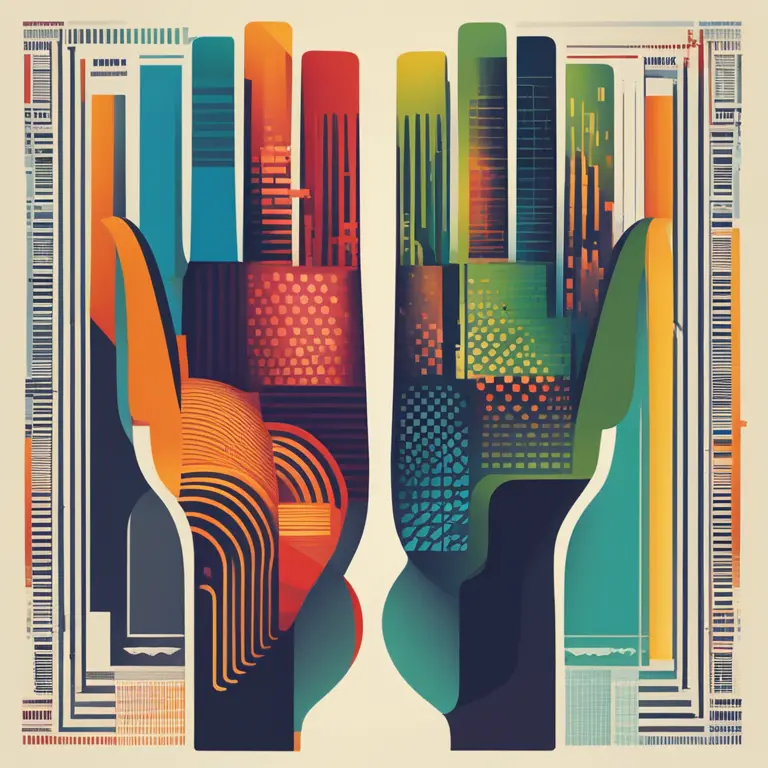
Palmistry: Which Hand Tells Your Story?
Delve into the intriguing world of palmistry for women and discover which hand holds the key to your personal narrative and intrinsic qualities.
article by Nora Pennington
Introduction to Feminine Palmistry
Palmistry, the ancient art of interpreting the lines and shapes of the hand, has intrigued people for centuries as a way to glean insights into personality and life events. For women, the practice often raises the question: which hand should be read to unlock the essence of one's story? This article serves as a guide, shedding light on the significant hand for women in palmistry, its symbolism, and its relevance for the modern seeker.

Right Hand vs Left Hand: The Palmistry Perspective
In traditional palmistry, it is believed that the left hand reflects innate characteristics, potentials, and the gifts we are born with. These attributes are akin to a blueprint or an unedited draft of one's life. For women, in particular, this hand can offer insights into personal qualities and inner emotional landscapes. Conversely, the right hand is often seen as the canvas of life, illustrating how we have shaped and will continue to shape our experiences and talents. This hand provides a dynamic view of our lives, including professional achievements, relationships, and evolving aspirations.

Understanding the Dominant Hand's Role
Intriguingly, the dominant hand plays a critical role in palmistry, revealing how active choices and environmental influences alter our paths. For most women, the dominant hand is the one more frequently used and therefore, embodies the present and future. It is the story written actively, through decisions and exertions of free will, imparting lessons and showcasing growth. Analyzing the dominant hand can thus provide clarity about current choices and their potential outcomes.

The Passive Hand: Unraveling Latent Abilities
Alternatively, the passive hand, generally the non-dominant one, holds a narrative of latent abilities and untapped potential. For women seeking self-discovery, examining the subtle aspects of this hand can reveal hidden talents and aspects of personality that await acknowledgment or development. It's a realm untainted by the external world, a space where true potential can be understood and perhaps, someday be harnessed.

The Influence of Cultural Variations
Cultural nuances also play a part in the practice of palmistry. Some Eastern traditions suggest specific hands to be read for women and men, often advocating that the right hand is more telling for men, while the left hand is preferential for women. This cultural wisdom is embedded in centuries of observation and practice, providing a unique framework that some practitioners still honor in contemporary palmistry readings.
Modern Palmistry: Embracing a Flexible Approach
As palmistry has evolved, many contemporary practitioners adopt a more flexible and inclusive approach. This evolution acknowledges that the conventional rules regarding which hand to read do not necessarily hold for every individual. Women today might consider a holistic palm reading that includes an analysis of both hands to gain a comprehensive understanding of their past, present, and potential.
Final Reflections on Feminine Palmistry
For those interested in the art, palmistry for women provides a unique lens through which one can view life's narrative. Whether focusing on the left, right, dominant, or passive hand, the key lies in piecing together the multiple aspects reflected in the palms. As female seekers journey into the realm of palmistry, they embark on a personal voyage of understanding and enlightenment that transcends time and cultural boundaries.
Published: 1/11/2024
Modified: 1/12/2024
More predictions
Come back here soon to learn more about yourself and your future


Can We Trust Palmistry?
Delving into the realm of palmistry, this article examines its credibility and place in contemporary spiritual practices.


Can Palmistry Foresee One’s Demise?
Delve into the contentious debate about whether palmistry can predict the end of life and the ethical considerations of such a claim.


Palmistry: The Historical Overview
Delve into the dawn of palmistry and trace its journey through the corridors of time, uncovering the roots of this ancient practice.